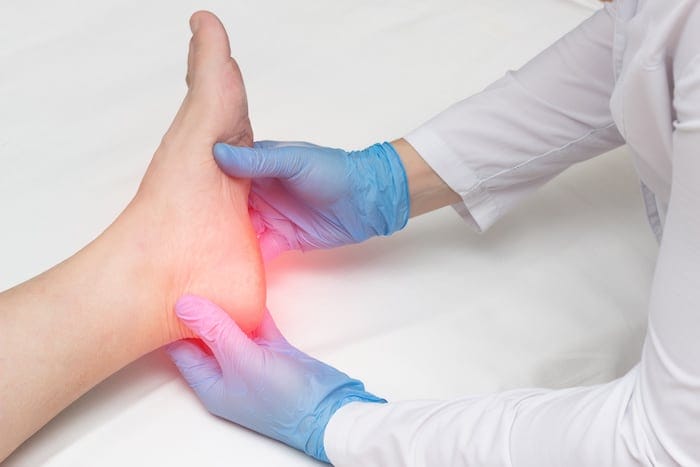Pressure sores can significantly impact the quality of life for those affected, causing pain, discomfort, and potentially severe complications. If you or a loved one is at risk, it’s essential to understand the causes, preventative measures, and management strategies for these troublesome wounds.
In this article, we’ll delve into the world of pressure sores, exploring their causes, prevention techniques, and effective management strategies. We’ll discuss practical tips and advice (such as using a pressure sore cushion), aiming to provide a comprehensive guide that’s both informative and engaging. So, let’s dive in and explore this crucial topic together.
What are Pressure Sores?
Pressure sores, also known as bedsores or pressure ulcers, are injuries to the skin and underlying tissue caused by prolonged pressure on the skin. They commonly develop on bony areas of the body, such as heels, hips, elbows, and tailbones, where the skin and bone are in close contact. When left untreated, pressure sores can cause serious complications, including infection and tissue damage.
Stages of Pressure Sores
Pressure sores are classified into four stages based on their severity:
- Stage 1: Intact skin with redness that doesn’t disappear when pressure is relieved.
- Stage 2: Partial-thickness skin loss involving the outermost layer of the skin (epidermis) and sometimes the deeper layer (dermis).
- Stage 3: Full-thickness skin loss, affecting the entire epidermis and dermis, and potentially reaching the subcutaneous tissue.
- Stage 4: Full-thickness skin and tissue loss, exposing underlying muscle, bone, or tendon.
Causes of Pressure Sores
Immobility
Prolonged immobility is a major cause of pressure sores. When a person is unable to move or change positions frequently, continuous pressure on the skin disrupts blood flow, depriving tissues of oxygen and nutrients. This can cause the skin and underlying tissue to break down and form pressure sores.
Poor Nutrition and Hydration
Inadequate nutrition and hydration can compromise the skin’s integrity, making it more susceptible to pressure sores. A balanced diet, including sufficient protein, vitamins, and minerals, is crucial for maintaining healthy skin.
Medical Conditions
Certain medical conditions, such as diabetes and vascular diseases, can affect blood circulation and increase the risk of developing pressure sores. Additionally, spinal cord injuries, neurological disorders, and other conditions that cause sensory impairments can prevent a person from feeling pain or discomfort, making it difficult to identify the early signs of pressure sores.
Prevention of Pressure Sores
- Regular Repositioning: Frequent repositioning is essential to alleviate pressure on vulnerable areas of the body. For bedridden individuals, it is recommended to change positions every two hours, while wheelchair users should shift their weight every 15 to 30 minutes.
- Proper Support Surfaces: Using appropriate support surfaces, such as pressure-reducing mattresses, cushions, and overlays, can help distribute body weight evenly and reduce pressure on bony areas.
- Maintaining Healthy Skin: Keeping the skin clean and dry is crucial to prevent pressure sores. Gently cleanse the skin with mild soap and water, and apply moisturizers to prevent dryness. Additionally, avoid using products that may irritate the skin, and protect vulnerable areas from friction and shear forces.
- Adequate Nutrition and Hydration: A balanced diet rich in protein, vitamins, and minerals is essential to maintain healthy skin and promote tissue repair. Drinking plenty of water and staying well-hydrated also helps maintain skin elasticity and overall health.
Effective Management Strategies
Treating Existing Pressure Sores
Early detection and treatment of pressure sores are crucial to prevent complications. Depending on the severity, treatment may involve relieving pressure, cleaning and dressing the wound, and promoting tissue regeneration through the application of topical ointments and dressings.
Pain Management
Pain is a common symptom of pressure sores, especially in advanced stages. Pain management strategies may include over-the-counter pain relievers, prescription medications, and non-pharmacological interventions, such as relaxation techniques and distraction.
Infection Control
Pressure sores can become infected, leading to more severe complications. Infection control measures may involve cleaning the wound with antiseptic solutions, applying antibiotic ointments, and, in some cases, administering oral or intravenous antibiotics.
Surgical Interventions
In severe cases, surgical intervention may be necessary to remove dead or infected tissue, promote healing, and prevent further complications. Surgical options include debridement, skin grafts, and flap reconstruction.
Conclusion
Understanding the causes, prevention, and effective management strategies for pressure sores is essential to promote skin health and reduce the risk of complications. By implementing preventative measures and early intervention, individuals at risk can maintain their quality of life and avoid the pain and discomfort associated with pressure sores.
FAQs
Who is at risk of developing pressure sores?
Individuals with limited mobility, sensory impairments, poor nutrition, or medical conditions affecting blood circulation are at a higher risk of developing pressure sores.
Can pressure sores be completely healed?
Yes, with proper treatment and care, pressure sores can heal. However, the healing process may take a long time, especially for advanced stages.
What are the potential complications of untreated pressure sores?
Untreated pressure sores can lead to serious complications, including infection, tissue damage, and, in extreme cases, sepsis or amputation.
How can family members and caregivers help prevent pressure sores?
Family members and caregivers can help prevent pressure sores by regularly repositioning the individual, ensuring proper support surfaces, maintaining healthy skin, and providing adequate nutrition and hydration.
When should I seek medical advice for a pressure sore?
Seek medical advice as soon as you notice any signs of a pressure sore, such as persistent redness, skin breakdown, or pain. Early intervention is crucial to prevent complications and promote healing.
The Editorial Team at Healthcare Business Today is made up of skilled healthcare writers and experts, led by our managing editor, Daniel Casciato, who has over 25 years of experience in healthcare writing. Since 1998, we have produced compelling and informative content for numerous publications, establishing ourselves as a trusted resource for health and wellness information. We offer readers access to fresh health, medicine, science, and technology developments and the latest in patient news, emphasizing how these developments affect our lives.








